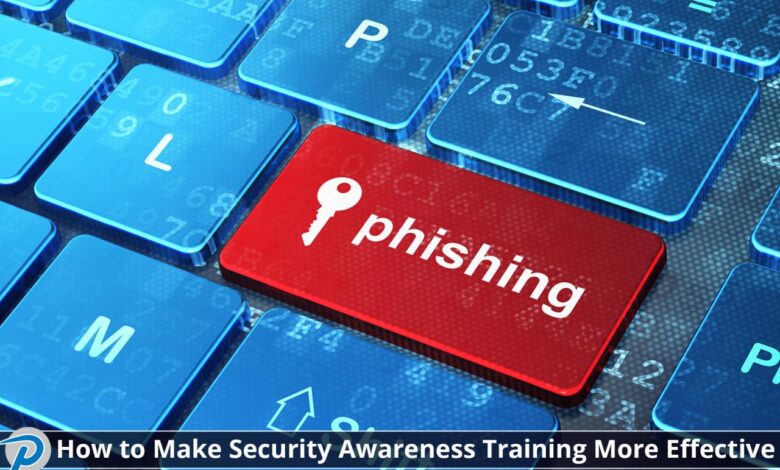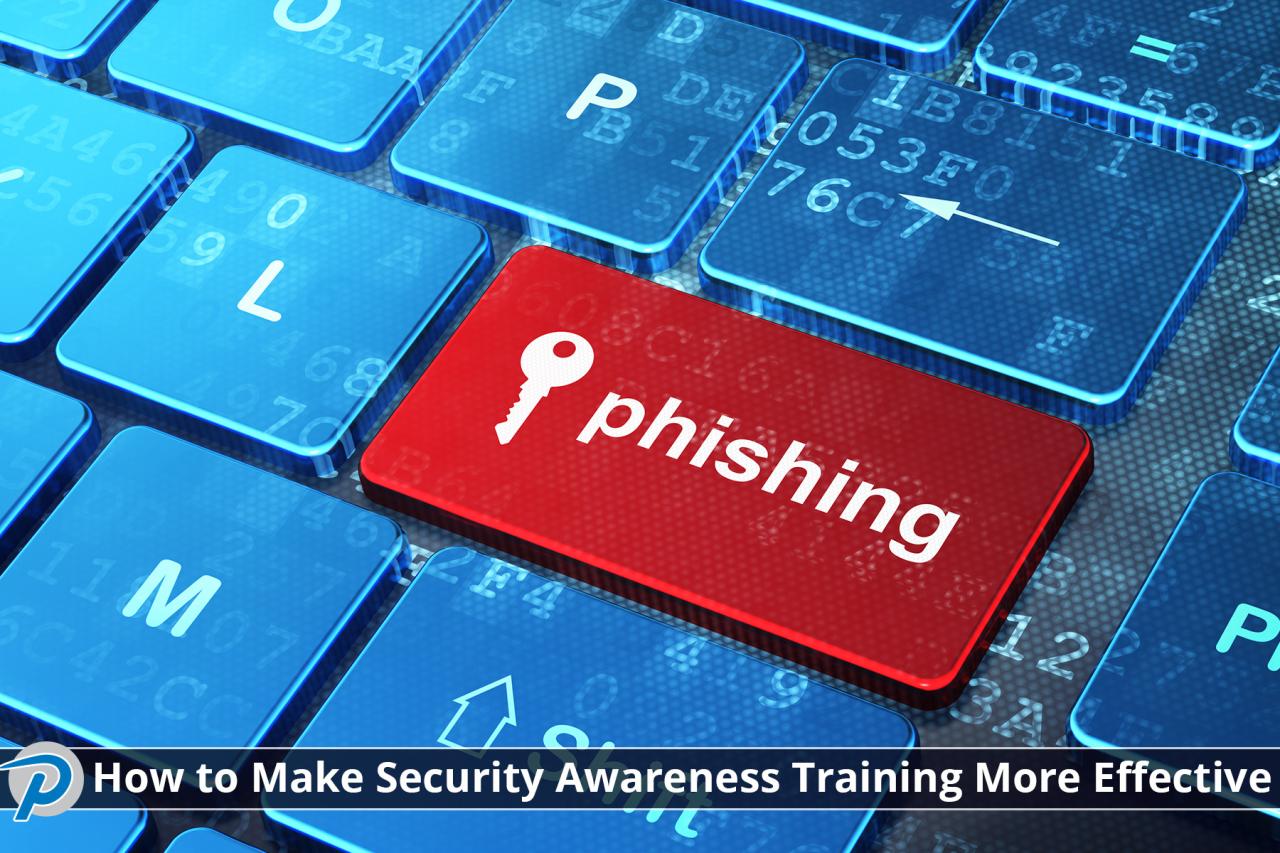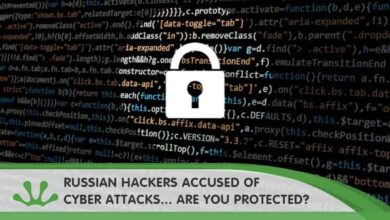
Accessibility Imperative in Security Training
The imperative of accessibility in security awareness training – Accessibility Imperative in Security Awareness Training: We often talk about cybersecurity, but are we truly including everyone? This isn’t just about ticking boxes; it’s about ensuring everyone in your organization, regardless of ability, is equipped to defend against threats. Ignoring accessibility in security training leaves significant gaps in your defenses, creating vulnerabilities that malicious actors can exploit.
Let’s dive into why accessible security training is not just a nice-to-have, but a critical necessity.
Think about it: visually impaired employees might miss crucial information in training materials lacking alt text, while those with auditory processing challenges could struggle with audio-only presentations. Cognitive differences can make complex security concepts difficult to grasp without clear, concise explanations and varied learning methods. This isn’t just about fairness; it’s about strengthening your overall security posture. A truly secure organization is one where
-everyone* is informed and empowered.
Defining Accessibility in Security Awareness Training
Security awareness training is crucial for protecting organizations from cyber threats. However, if this training isn’t accessible to all employees, its effectiveness is severely hampered. Accessibility in this context means ensuring that training materials and delivery methods cater to the diverse needs and abilities of your workforce. This includes considering visual, auditory, cognitive, and motor impairments, among others.
By creating inclusive training, organizations can reach a wider audience, improve understanding, and ultimately strengthen their overall security posture.
Accessibility in security awareness training encompasses several key dimensions. Visual accessibility focuses on ensuring information is presented clearly and legibly, catering to individuals with visual impairments. Auditory accessibility considers those with hearing difficulties, requiring the use of captions and transcripts for audio content. Cognitive accessibility focuses on simplifying language, structuring information logically, and providing multiple ways to access the material, benefiting those with learning disabilities or cognitive impairments.
Finally, motor accessibility considers individuals with limited dexterity or mobility, requiring the use of alternative input methods such as voice commands or keyboard navigation.
Barriers to Accessibility in Traditional Security Awareness Training
Traditional security awareness training often presents significant accessibility barriers. For example, lengthy videos without captions exclude individuals with hearing impairments. Complex, jargon-filled presentations can overwhelm those with cognitive differences. Training delivered solely through a desktop interface can be inaccessible to those with motor impairments. The reliance on visual-only content, such as intricate diagrams or animations without alt text, further restricts participation for visually impaired learners.
Furthermore, a lack of diverse learning formats limits engagement and comprehension for individuals with varied learning styles and preferences. These limitations not only prevent effective training but also create a sense of exclusion and inequity within the workforce.
Best Practices for Designing Accessible Training Materials
Creating accessible security awareness training requires a proactive approach. Begin by using clear and concise language, avoiding jargon and technical terms whenever possible. Provide alternative text descriptions (alt text) for all images, describing their content and purpose accurately. Ensure all videos have accurate captions and transcripts, providing a text-based alternative for audio information. Structure content logically, using headings, subheadings, and bullet points to improve readability and comprehension.
Offer multiple formats for training materials, such as text-based documents, audio recordings, and interactive modules. Consider using screen readers compatible design and ensuring keyboard navigation is available throughout the training platform. Regularly review and update materials to reflect best practices and address emerging accessibility challenges. Consider using color contrast checkers to ensure sufficient contrast between text and background colors.
Accessibility Features and Their Benefits
| Feature | Description | Benefit | Implementation Example |
|---|---|---|---|
| Captions for Videos | Text transcription of audio content in videos. | Allows individuals with hearing impairments to access video content. Improves comprehension for all learners, particularly in noisy environments. | Using YouTube’s automatic captioning feature and manually reviewing/editing for accuracy. |
| Alternative Text (Alt Text) for Images | Descriptive text that conveys the meaning and purpose of an image for screen readers. | Enables individuals with visual impairments to understand the image content. Improves and overall web accessibility. | For an image of a phishing email, alt text could be: “Example of a phishing email with suspicious sender address and urgent subject line.” |
| Keyboard Navigation | Ability to navigate the training content using only a keyboard. | Allows individuals with motor impairments to access the training without relying on a mouse. Improves accessibility for all users. | Ensuring all interactive elements can be accessed and activated using the Tab key. |
| Clear and Concise Language | Using simple language and avoiding jargon. | Improves comprehension for all learners, particularly those with cognitive impairments or limited English proficiency. | Replacing “malware” with “harmful software” and avoiding complex sentence structures. |
The Impact of Inaccessible Training on Security Posture

Inaccessible security awareness training significantly weakens an organization’s security posture, leaving a critical vulnerability in its defenses. When training materials and delivery methods fail to accommodate individuals with disabilities, a segment of the workforce is excluded from crucial security education. This not only violates ethical and legal principles but also creates a direct pathway for security breaches. The consequences extend beyond simple inconvenience; they pose a genuine threat to sensitive data and organizational reputation.Ignoring accessibility in security awareness training creates a blind spot in an organization’s overall security strategy.
It’s akin to leaving a door unlocked, only this door leads directly to sensitive information and potentially catastrophic data breaches. This oversight undermines the very purpose of security awareness training: to empower every employee to identify and mitigate security risks.
Security Risks Associated with Inaccessible Training
Excluding employees from security awareness training due to accessibility limitations directly increases the risk of security incidents. Individuals with disabilities who lack the necessary training are more susceptible to phishing attacks, malware infections, and social engineering scams. This vulnerability is amplified when considering the increasing sophistication of cyber threats, which often target individuals lacking comprehensive security knowledge. For example, a visually impaired employee unable to access training materials in an accessible format might fall victim to a phishing email containing a visually deceptive link, leading to a malware infection or data breach.
Similarly, an employee with a cognitive disability might struggle to understand complex security protocols explained solely through text-heavy presentations, making them an easier target for social engineering attacks.
Real-World Examples of Preventable Security Breaches
While pinpointing specific breaches solely attributable to inaccessible training is difficult due to the lack of public reporting on this specific issue, the underlying principle is clear. Consider a hypothetical scenario: a large financial institution implements a security awareness training program using only video-based modules. Employees with hearing impairments are excluded, resulting in a higher likelihood of successful phishing attempts targeting those employees.
This lack of accessible training could lead to a significant financial loss, reputational damage, and potential legal repercussions. The same applies to organizations using only text-based training materials, excluding visually impaired employees. These scenarios illustrate how a lack of accessibility translates directly into increased vulnerability and potential for breaches.
Legal and Ethical Implications of Inaccessible Security Awareness Programs
Organizations have a legal and ethical responsibility to provide accessible training to all employees, regardless of disability. Laws like the Americans with Disabilities Act (ADA) in the United States and similar legislation in other countries mandate reasonable accommodations to ensure equal access to employment opportunities, including training. Failing to provide accessible security awareness training can result in lawsuits, fines, and reputational damage.
Furthermore, excluding employees based on disability is ethically unacceptable, violating principles of fairness, inclusion, and equal opportunity. It is a breach of trust and demonstrates a lack of commitment to the well-being and security of all employees.
Consequences of Inaccessible Training for Organizations
Here’s a summary of the potential consequences:
- Increased risk of security breaches and data loss.
- Higher financial losses due to incidents and remediation efforts.
- Legal liabilities and potential lawsuits under accessibility legislation.
- Reputational damage and loss of customer trust.
- Decreased employee morale and productivity.
- Non-compliance with industry best practices and regulatory standards.
Designing Accessible Security Awareness Training Programs
Creating truly effective security awareness training requires acknowledging and addressing the diverse needs of your audience. Accessibility isn’t just a matter of compliance; it’s about ensuring everyone can understand and participate, leading to a stronger overall security posture. A well-designed program reaches all learners, regardless of their abilities or learning preferences.Designing accessible security awareness training involves a multi-faceted approach, considering various learning styles and disabilities.
This requires careful consideration of content, delivery methods, and the tools used to create and disseminate the training. The goal is to make the information clear, engaging, and readily usable for everyone.
Sample Accessible Training Module: Phishing Awareness
This module addresses the common threat of phishing attacks. It incorporates diverse accessibility features to cater to various learning styles and disabilities.The module begins with a short video explaining phishing in simple terms, using clear audio and captions. The video features a diverse cast of characters to increase relatability. Following the video, a series of interactive scenarios are presented.
Each scenario presents a potentially phishing email and requires the user to identify suspicious elements. Feedback is provided immediately, explaining why a choice was correct or incorrect. The scenarios are designed to be accessible via keyboard navigation and screen readers. Alternative text descriptions are provided for all images, including descriptions of visual cues like suspicious links or unusual email addresses.
The module concludes with a downloadable checklist summarizing key phishing red flags, available in multiple formats (e.g., PDF, plain text, HTML). The text size is adjustable, and the document is designed for screen readers. A printable version is also available with larger fonts and high contrast.
Tools and Technologies for Accessible Security Awareness Training
Several tools and technologies can significantly enhance accessibility. Captioning and transcription services are crucial for videos and audio content. Screen reader compatibility is paramount when designing online modules, ensuring that keyboard navigation and ARIA attributes are properly implemented. Text-to-speech software allows users to listen to content, while speech-to-text tools facilitate content creation. Authoring tools that support accessibility features, such as the ability to add alt text to images and create interactive content compatible with assistive technologies, are essential.
Color contrast checkers can help ensure sufficient contrast between text and background colors for users with visual impairments.
Accessible Security Awareness Training Delivery Methods
Different methods for delivering security awareness training offer varying levels of accessibility. Online modules offer flexibility and scalability, but require careful design to ensure compatibility with assistive technologies. In-person workshops allow for interactive learning and immediate feedback, but require careful planning to accommodate diverse needs. For example, providing large-print materials, sign language interpreters, and accessible venues are essential.
Microlearning, delivering small, focused learning units, can be particularly effective for individuals with shorter attention spans or cognitive impairments, allowing for frequent breaks and digestible information. Each method has its advantages, and a blended approach combining multiple delivery methods can often be the most effective and accessible solution.
Using Alternative Text Descriptions for Images
Alternative text (alt text) is crucial for making images accessible to visually impaired learners. It provides a textual description of the image’s content and purpose. For example, instead of simply writing “alt text=image of phishing email,” a more descriptive alt text would be: “alt text=Image shows a phishing email with the subject line ‘Urgent Security Alert,’ a suspicious sender address, and a link to a fake login page.” This provides context and meaning to the image for users who cannot see it.
The alt text should be concise but comprehensive, conveying the essential information contained within the image. Alt text should be used for all images, diagrams, and other visual elements within the training materials.
Measuring the Effectiveness of Accessible Training

Measuring the effectiveness of accessible security awareness training isn’t just about confirming completion rates; it’s about understanding if the training truly improved security posture forall* learners, including those with disabilities. This requires a multi-faceted approach that goes beyond traditional metrics and actively incorporates feedback from diverse learners. Effective measurement ensures resources are allocated efficiently and the training remains relevant and impactful.Effective measurement of accessible security awareness training hinges on utilizing a variety of methods to assess both learner engagement and knowledge retention.
This includes quantitative data analysis alongside qualitative feedback to gain a complete picture of training success. By combining these approaches, organizations can identify areas for improvement and demonstrate the value of their investment in inclusive security training.
Metrics for Learner Engagement and Knowledge Retention
Tracking learner engagement and knowledge retention in accessible training requires a nuanced approach. Simple completion rates are insufficient; we need to understand
how* learners interacted with the material. For example, time spent on specific modules, quiz scores, and the frequency of accessing supplemental resources all provide valuable insights. Additionally, qualitative feedback through surveys and focus groups offers crucial contextual information. Consider these metrics
- Time on Task: Tracking the time spent on each module can reveal areas of difficulty or disengagement. Longer times on certain modules for learners using assistive technologies might indicate accessibility issues requiring attention. Shorter times across the board could indicate a lack of engagement, irrespective of accessibility.
- Quiz Scores and Performance Data: Analyzing quiz scores can identify knowledge gaps. However, it’s crucial to consider the accessibility of the quiz itself. For instance, are alternative text descriptions provided for images? Are screen readers able to properly interpret the quiz format? Low scores might indicate a training deficiency, not necessarily learner failure.
- Supplemental Resource Usage: Tracking the use of transcripts, closed captions, audio descriptions, or other supplementary materials indicates learners’ need for and utilization of accessibility features. High usage of these resources doesn’t necessarily indicate a failure of the primary training but rather demonstrates the success of providing inclusive options.
- Qualitative Feedback Surveys: Surveys should be designed to be accessible themselves and include open-ended questions to allow learners to share their experiences and identify areas for improvement. This is particularly crucial for learners with disabilities who may have unique perspectives.
Accessibility Checklist for Existing Training Materials
A thorough checklist is vital for evaluating the accessibility of existing security awareness training materials. This checklist should be used both before and after deployment to ensure ongoing compliance and improvement.
- Alternative Text for Images and Multimedia: Verify that all images, videos, and other non-text content have accurate and descriptive alternative text.
- Closed Captions and Transcripts: Ensure that all videos and audio content include accurate closed captions and transcripts.
- Screen Reader Compatibility: Test the training materials with a screen reader to ensure that all content is properly interpreted and navigable.
- Keyboard Navigation: Verify that all interactive elements can be accessed and operated using only a keyboard.
- Color Contrast: Ensure that sufficient color contrast exists between text and background colors to meet WCAG guidelines.
- Document Structure and Formatting: Check that documents are well-structured using headings, lists, and other semantic elements.
- PDF Accessibility: If PDFs are used, ensure they are tagged and accessible to screen readers.
Gathering Feedback from Learners with Disabilities
Gathering feedback from learners with disabilities requires sensitivity and proactive engagement. This shouldn’t be a one-off exercise; it should be an ongoing process integrated into the training program’s development and improvement cycle.
- Targeted Surveys and Focus Groups: Conduct surveys and focus groups specifically targeting learners with disabilities. Provide incentives for participation and ensure anonymity.
- Accessible Feedback Mechanisms: Offer various methods for providing feedback, including email, phone calls, online forms, and in-person meetings, to accommodate diverse communication preferences and abilities.
- Collaboration with Disability Advocacy Groups: Partner with disability advocacy groups to obtain insights and guidance on best practices for inclusive training design and accessibility standards.
- Regular Review and Iteration: Feedback should be reviewed regularly and used to iterate and improve the training program’s accessibility features. This demonstrates commitment to ongoing inclusivity.
Creating Inclusive Learning Environments: The Imperative Of Accessibility In Security Awareness Training
Building truly effective security awareness training requires more than just delivering information; it demands the creation of an inclusive learning environment where everyone feels comfortable, respected, and able to participate fully. This means actively addressing potential barriers and biases, fostering a sense of belonging, and ensuring the training materials and delivery methods are accessible to all learners, regardless of their background, abilities, or learning styles.
A truly inclusive approach leads to better engagement, knowledge retention, and ultimately, a stronger security posture for the entire organization.Creating an inclusive learning environment involves a multifaceted approach that considers various aspects of the learning process. It’s about moving beyond simply providing accessible materials to fostering a culture of respect and understanding where diverse perspectives are valued and all learners feel empowered to contribute.
This includes proactively addressing potential biases in the training content, choosing inclusive language, and designing interactive activities that encourage participation from everyone.
Addressing Potential Biases in Security Awareness Materials
Security awareness training materials often unintentionally perpetuate existing biases. For example, scenarios might disproportionately feature certain demographics or use stereotypical representations. To mitigate this, a rigorous review process should be implemented. This involves multiple individuals from diverse backgrounds reviewing materials for potential biases, ensuring scenarios are relatable and representative of the diverse workforce, and avoiding language that could be considered offensive or exclusionary.
For instance, a scenario depicting a phishing email targeting only older individuals overlooks the fact that phishing attempts target all demographics. A more inclusive approach would demonstrate how various age groups can be vulnerable and offer relevant preventative measures.
Making security awareness training accessible is crucial; everyone needs to understand the risks. This is especially true as we see advancements in app development, like those explored in this great article on domino app dev the low code and pro code future , which highlights how easier development can lead to more apps – and more potential security vulnerabilities.
Therefore, accessible training ensures everyone, regardless of technical skill, can contribute to a safer digital environment.
Inclusive Language and Terminology in Security Awareness Training
The language used in security awareness training significantly impacts its effectiveness and inclusivity. Avoid jargon and technical terms that might confuse or alienate learners with varying levels of technical expertise. Instead, opt for clear, concise language that is easily understandable by everyone. Furthermore, be mindful of gendered language and use gender-neutral terms whenever possible. For example, instead of using phrases like “the user” or “the employee,” use more inclusive terms like “individuals,” “team members,” or “everyone.” Consider using “they/them” pronouns as a gender-neutral option, where grammatically appropriate, to be inclusive of non-binary individuals.
Similarly, avoid language that assumes a specific level of digital literacy, acknowledging that individuals’ comfort and experience with technology varies greatly.
Creating a Supportive and Welcoming Atmosphere, The imperative of accessibility in security awareness training
A supportive and welcoming atmosphere is crucial for effective learning. This starts with the training facilitator, who should create a safe space for questions and discussions, encourage participation from all learners, and actively address any concerns or anxieties. Interactive activities, group discussions, and opportunities for peer-to-peer learning can help build a sense of community and foster collaboration. The physical environment should also be considered; ensuring comfortable seating arrangements, appropriate lighting, and a quiet learning space are all essential elements in creating an inclusive learning environment.
For virtual training, providing clear instructions on how to participate and use the technology, as well as offering technical support, are crucial steps in ensuring equal access and participation.
Future Trends in Accessible Security Awareness Training
The field of security awareness training is undergoing a rapid transformation, driven by technological advancements and a growing understanding of the importance of inclusivity. Future trends will focus on leveraging emerging technologies to create more engaging, effective, and accessible training programs for diverse learners. This evolution will not only enhance security posture but also foster a more inclusive and equitable workplace.
AI-powered tools and personalized learning experiences are poised to revolutionize how organizations deliver security awareness training. The accessibility improvements will go beyond simple captioning and alt-text, creating truly personalized and adaptive learning pathways. This means training that dynamically adjusts to individual learning styles, paces, and needs, regardless of disability.
AI-Powered Personalization in Security Awareness Training
Artificial intelligence is rapidly becoming a key player in creating accessible and effective security awareness training. AI-powered platforms can analyze learner data to identify knowledge gaps and tailor training content accordingly. This personalized approach ensures that individuals receive the specific information they need, at the pace that suits them best. For example, an AI system could detect that a learner is struggling with a particular concept and automatically provide additional resources, such as simplified explanations or interactive exercises.
Furthermore, AI can adapt the delivery method based on the learner’s preferences, offering options like text-to-speech, visual aids, or interactive simulations. This ensures that the training is engaging and accessible to a wider range of learners, regardless of their learning styles or disabilities. The result is a more effective and inclusive learning experience that leads to improved security awareness across the organization.
Challenges and Opportunities in Accessible Security Awareness Training
While the future looks promising, challenges remain. One significant hurdle is the cost and complexity of implementing AI-powered accessibility solutions. Organizations, especially smaller ones, may struggle with the initial investment required for these technologies. Another challenge is ensuring that AI algorithms are free from bias and accurately assess learner needs across diverse populations. However, the opportunities outweigh the challenges.
The potential to reach a wider audience, improve training effectiveness, and reduce security risks significantly outweighs the initial investment. The development of accessible training materials also presents opportunities for organizations to demonstrate their commitment to inclusivity and build a more diverse and equitable workforce.
Recommendations for Improving Accessibility in Security Awareness Programs
Organizations should prioritize a multi-faceted approach to improve accessibility. This includes conducting regular accessibility audits of existing training materials, investing in accessible technology, and providing training to staff on inclusive teaching practices. Collaboration with accessibility experts and disability advocacy groups is crucial to ensure that training programs meet the needs of diverse learners. Furthermore, adopting universal design principles from the outset ensures that training materials are inherently accessible to everyone, regardless of ability.
This proactive approach minimizes the need for costly retrofits later. Finally, regularly gathering feedback from learners on their training experience is essential for continuous improvement and identifying areas for enhancement.
Timeline: Evolution of Accessibility in Security Awareness Training (2013-2028)
| Year | Trend | Example |
|---|---|---|
| 2013-2015 | Basic Accessibility Compliance (WCAG 2.0 basics) | Adding alt text to images, providing captions for videos. |
| 2016-2018 | Increased Focus on Diverse Learning Styles | Incorporating multimedia content, offering various formats (e.g., audio, text). |
| 2019-2021 | Emergence of AI-Powered Personalization | Adaptive learning platforms begin to offer personalized learning paths. |
| 2022-2024 | Emphasis on Inclusive Design Principles | Building accessibility into the design process from the start. |
| 2025-2028 | Immersive and Gamified Accessible Training | VR/AR training experiences with robust accessibility features. |
Closing Notes
Creating truly accessible security awareness training isn’t just ethically right; it’s strategically smart. By embracing inclusive design principles and leveraging the right tools, organizations can significantly reduce their attack surface and build a stronger, more resilient security culture. Remember, a secure organization is one where everyone feels included, informed, and empowered to contribute to its safety. Let’s make security awareness training accessible to all – it’s the only way to ensure everyone is on board in the fight against cyber threats.
Commonly Asked Questions
What are the legal ramifications of inaccessible security training?
Depending on your location, laws like the Americans with Disabilities Act (ADA) in the US mandate reasonable accommodations for employees with disabilities. Inaccessible training can lead to lawsuits and significant financial penalties.
How can I measure the effectiveness of accessible training?
Use a multi-faceted approach. Track completion rates, knowledge retention via quizzes, and gather feedback from participants (including those with disabilities) using diverse methods like surveys and focus groups.
What are some low-cost ways to improve accessibility?
Start with simple changes: adding alt text to images, providing transcripts for videos, using clear and concise language, and offering multiple formats (e.g., text, audio). Many free tools and resources are available online.
What if my employees have diverse learning styles?
Offer a variety of training formats (videos, interactive modules, quizzes, etc.) to cater to different learning preferences. Microlearning modules can be especially effective for shorter attention spans.





